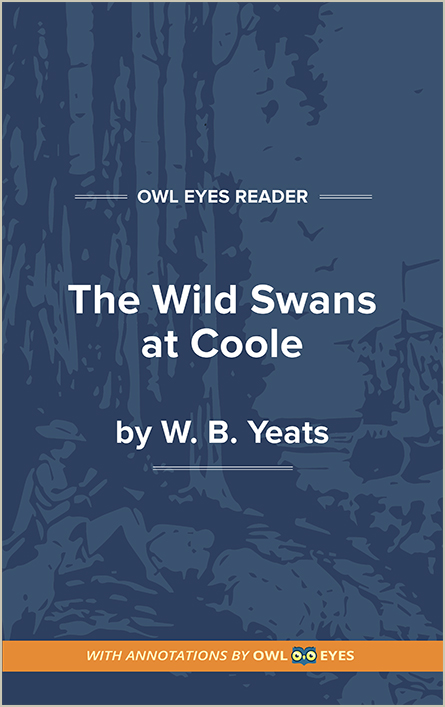- Annotated Full Text
- Literary Period: Modern
- Publication Date: 1917
- Flesch-Kincaid Level: 12
- Approx. Reading Time: 0 minutes
The Wild Swans at Coole
The speaker of W.B. Yeats’s “The Wild Swans at Coole” watches a flock of vibrant swans on a lake against the backdrop of a dry October evening. The speaker stands in Coole Park for the nineteenth time, yet he is still struck by the beauty of these creatures in the water. His awed thoughts are tangled with the contemplation of his own inevitable mortality, which starkly contrasts with the youthful vigor of the swans. Although not repeated in the body of the poem, the adjective “wild” here is key to understanding both this poem and the wider range of Yeats’s poetic works: the word conjures feelings of freedom, power, independence, and in many instances, passion and love. The poem takes its setting from Coole Park, an expansive nature reserve located in County Galway, Ireland. In the early 20th century, Coole Park was the home of dramatist Lady Gregory, where it became the epicenter of the Irish Literary Revival and a frequent haunt of great writers such as George Bernard Shaw, Sean O’Casey, and John Millington Synge. Many have read this poem autobiographically as Yeats had significant difficulty writing new work from 1916-1917, the writing period of this poem. The juxtaposition of stagnation and dryness with the swans’ brilliant passion marks the speaker’s awareness of his own lack of vitality, and perhaps the poet’s yearning for his poetic muse to return.
- Annotated Full Text
- Literary Period: Modern
- Publication Date: 1917
- Flesch-Kincaid Level: 12
- Approx. Reading Time: 0 minutes

